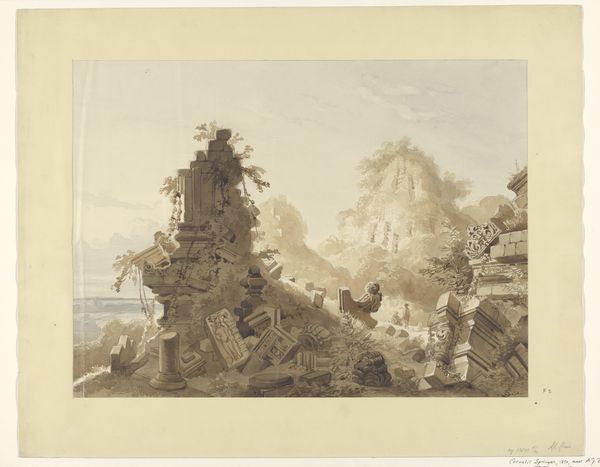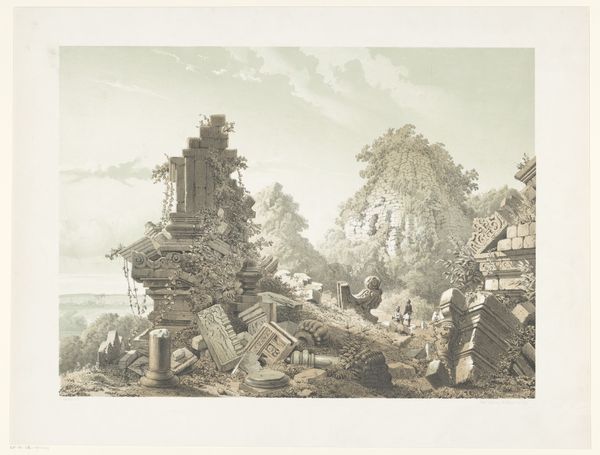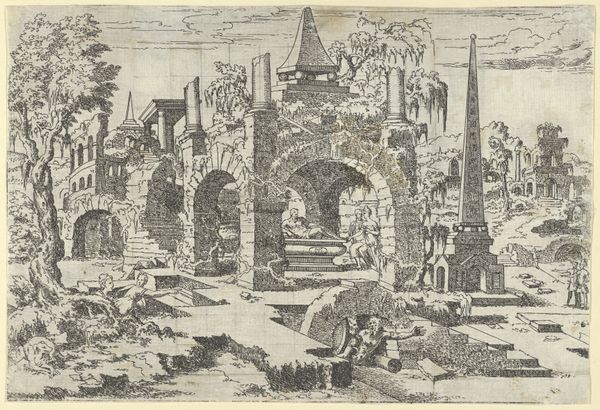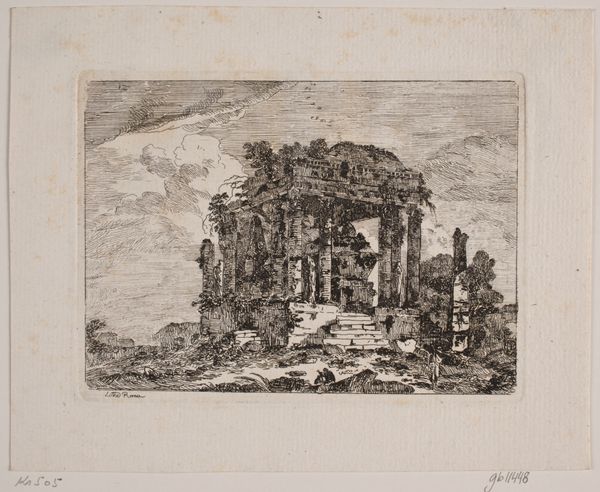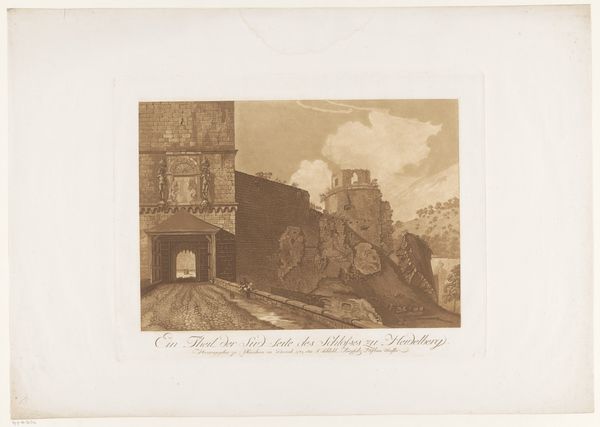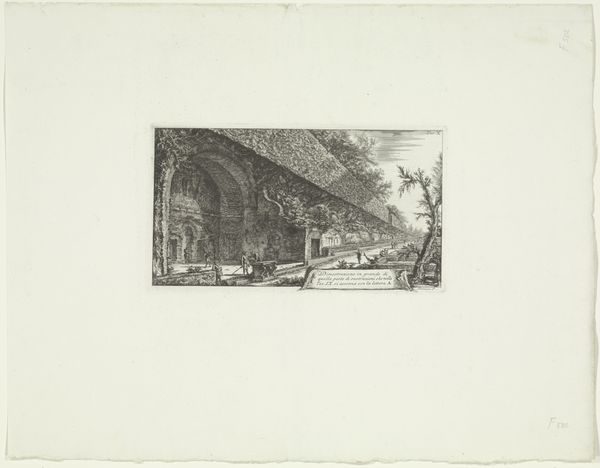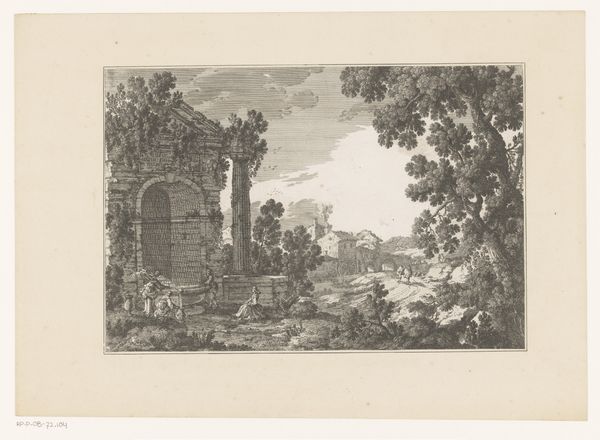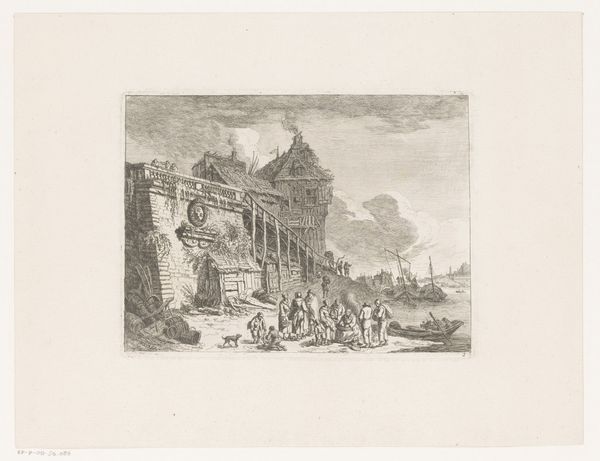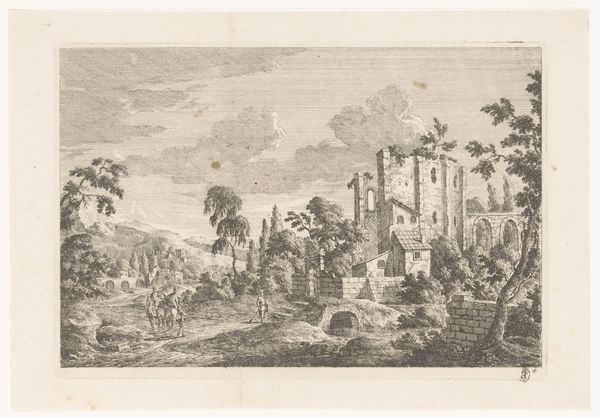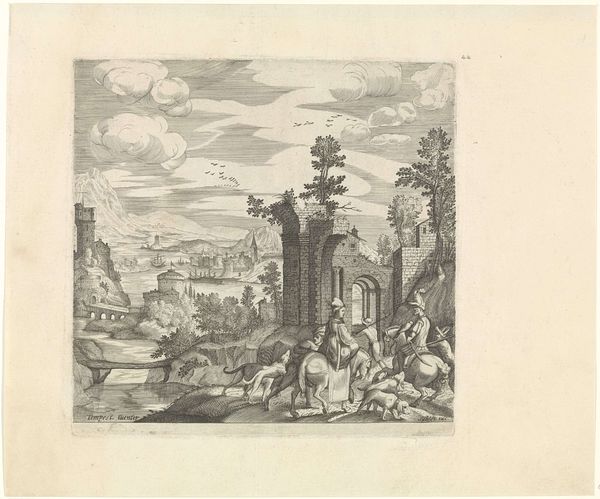
Dimensions: height 519 mm, width 688 mm
Copyright: Rijks Museum: Open Domain
Editor: Here we have Cornelis Springer's "Ruïne van Tjandi Sewoe," created between 1852 and 1856. It's a lithograph with etching and tempera. It feels so melancholic, almost a forgotten world… What pulls you in when you look at this piece? Curator: Oh, this whisper of time, carried on a gentle breeze, right? For me, it's how Springer captures the romanticism of ruin. Notice how the crumbling temple, Tjandi Sewoe, isn’t just depicted, but *felt*. You see those delicate lines of the etching and the soft hues of the tempera? They don't merely illustrate; they evoke a sense of history's patient decay, almost a soft dream fading from memory. The distant volcano… do you think that is active or inactive in his eyes? Editor: It looks…dormant, maybe? Providing a sort of…stark contrast to the human elements in the foreground? Curator: Precisely! It's about scale, the eternal versus the ephemeral. Springer sets up the sublime power of nature against human attempts at immortality. And those figures, almost lost in the grand scene…perhaps observers like us? Editor: So they represent us contemplating history? Curator: Perhaps, or simply people lost in the immensity of it all, questioning our place within a much larger narrative. It's the questions the piece invites rather than any definitive answer, that linger, don’t you agree? Editor: Absolutely! It's made me reconsider the narrative these ruins hold, and our part in understanding it. Curator: Indeed, it’s not just a ruin; it is a doorway to understanding our place in time, the delicate dance between what crumbles and what endures.
Comments
No comments
Be the first to comment and join the conversation on the ultimate creative platform.

